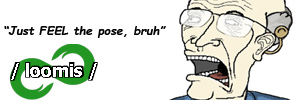I hath returned, and i've gotten some more. The latest comic I read was The Eternaut, a very excellent book, and as far as I can tell one of the first entries in the post apocalpytic/survival horror genres.
Now compositionally The Eternaut is not all that complex. The panels are square and there are rarely more than 3 per page. Now many artists would want to make the character designs simplistic and easy to draw as in Tintin, López uses an unusual amount of detail and lines to make the characters stand out. This works really well, as by the end of story the characters are exhausted, beaten, and shellshocked, and the gritty line work emphasizes this. There are often pages of characters talking, and López simply shifts the viewpoint around slightly. I find that when illustrating long conversations, it seems tedious to draw the characters over and over in basically the same place. If you alter the angle a bit, zoom in or out, and make sure the characters expression changes appropriately, it should be interesting enough. If that fails you could just draw a silhouette, or zoom way out and show text bubbles coming from the building the characters are in.
Drawing in black and white can be a difficult challenge so that the characters dont get lost in the back round. It is especially impressive how detailed the back rounds are in The Eternaut, yet it always felt clear. It appears the best way to do this is to make sure the focus of the panel is much brighter or darker than everything else. In The Eternaut, a detailed back round might appear only 2-3 times per page, and I think this saves time, but also makes the page seem less cluttered as a whole.
Now because of this fairly standard layout, there are a few pages that break the pattern as in the second image, giving a very strong effect.
Ive also been considering that when reading a comic, the reader cannot stop himself from seeing the who page at once. Therefore, an artist should give thought of each page as a whole, and think what exactly the goal of that page is. Special consideration should be given to resolving issues on page, or leaving them to the next. A reader might be tempted to skip panels if he sees the resolution on the bottom of the page, but i'm sure it would feel artificial if you did this too often.
Another thought i've had, and this is a bit of a non-sequiter, but I was noticing how in The Eternaut all the females were drawn fucking hot. Now this might have been because the artist was also, according to the credits, an award winning erotic artist (research to come). I was reminded of a youtube video I saw asking why so many cartoons had the trope of hot big tiddy goth GFs. The guy who made the video offered the explanation that cartoonists and animators are generally lonely nerds who wish they had a quirky art hoe GF. I guess, after I guess nearly 6 months of comic development I can pretty much relate. 2 out of 3 female characters in my story are basically waifubait, although one started as a joke, but kind of grew on me, and I think im doing well enough to expand them at least. Maybe we can call this rule 34- C: No matter the work the artist will always find a way to include his fetish.
